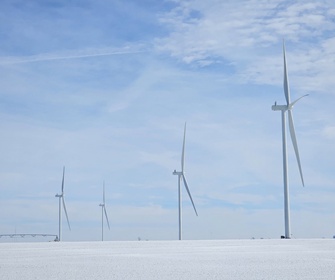With the launch of the Mistral strategy program and a new operating model, Siemens Gamesa took decisive steps to mitigate ongoing headwinds and to stabilise the business for profitable growth in the long term.
The company’s performance during the fiscal year reflected market imbalances caused by persisting supply chain disruptions, heightened by geopolitical tensions and additional waves of COVID-19, as well as upward pressure on the price of inputs and shipping. There were also internal challenges. These challenges included the industrialisation of the Siemens Gamesa 5.X onshore platform, where progress was slower than planned, and additional costs related to failures and repairs of components in legacy onshore platforms. All these factors affected the manufacturing, execution and delivery of projects in progress. In this challenging situation, Siemens Gamesa signed orders for €11,598 million in the last 12 months, increasing the company’s backlog to €35,051 million.
Revenue from October 2021 to September 2022 amounted to €9,814 million (-4% year-over-year). EBIT pre PPA and before integration and restructuring costs amounted to -€581 million, with an EBIT margin of -5.9%. The numbers come as a result of supply instability and delays in project execution, the challenges around the ramp-up of the Siemens Gamesa 5.X platform, reduced manufacturing activity, and component failures and repairs in legacy onshore platforms. This impact was partially offset by the successful sale of renewable development assets in southern Europe. The company closed the fiscal year with a net loss of €940 million (vs. -€627 million in FY21).
In the fourth quarter, revenue amounted to €3,372 million (+17.8% year-over-year). EBIT pre PPA and before integration and restructuring costs amounted to €375 million, with an EBIT margin of 11.1%. The company reported net profit of €286 million in the quarter from July to September 2022.
Order intake from July to September increased 53% year-over-year to €4,405 million: €1,566 million in offshore (+76% year-over-year), €1,743 million in onshore (twice the figure registered in the same period of the previous year, boosted by the asset disposal in southern Europe), and €1,097 million in service (-3% year-over-year). As of September 30, 2022, net debt totaled -€1,232 million.
As part of the initial effort to stabilise the business, Siemens Gamesa defined a new operating model with a clear focus on processes and a lean organisation, which will be effective as of January 1, 2023. In this context, the company carried out an organisational review to identify synergies across several functions and to adjust its manufacturing footprint and capacity to match market demands. As a consequence, around 2,900 positions will be affected by fiscal year 2025 across the company, out of which 1,900 will be in Europe. Additionally, Siemens Gamesa is working on strengthening specific areas within key leading markets to capitalise on its strong market position in offshore and to grow across the entire value chain while driving a project-centric business approach.
With the new organisational setup, Siemens Gamesa is preparing to reap significant cost synergies through the potential integration into Siemens Energy. On November 7, the Spanish National Securities Market Commission CNMV approved the voluntary cash tender offer by Siemens Energy to acquire all outstanding shares in Siemens Gamesa which it does not already own.
Following a challenging year, Siemens Gamesa begins fiscal year 2023 in an equally complex environment characterised by persistently high inflation and supply chain disruptions that severely affect the cost of materials. However, after this transition year, it expects the market environment to normalise. This will enable Siemens Gamesa regain profitability and resume cash flow progressively in the future. By 2025, Siemens Gamesa aims to have streamlined its platform strategy and achieved a scalable, cross-application operating model for offshore, onshore and service – combined with a highly commoditised supply chain that is robust against market disruptions.








